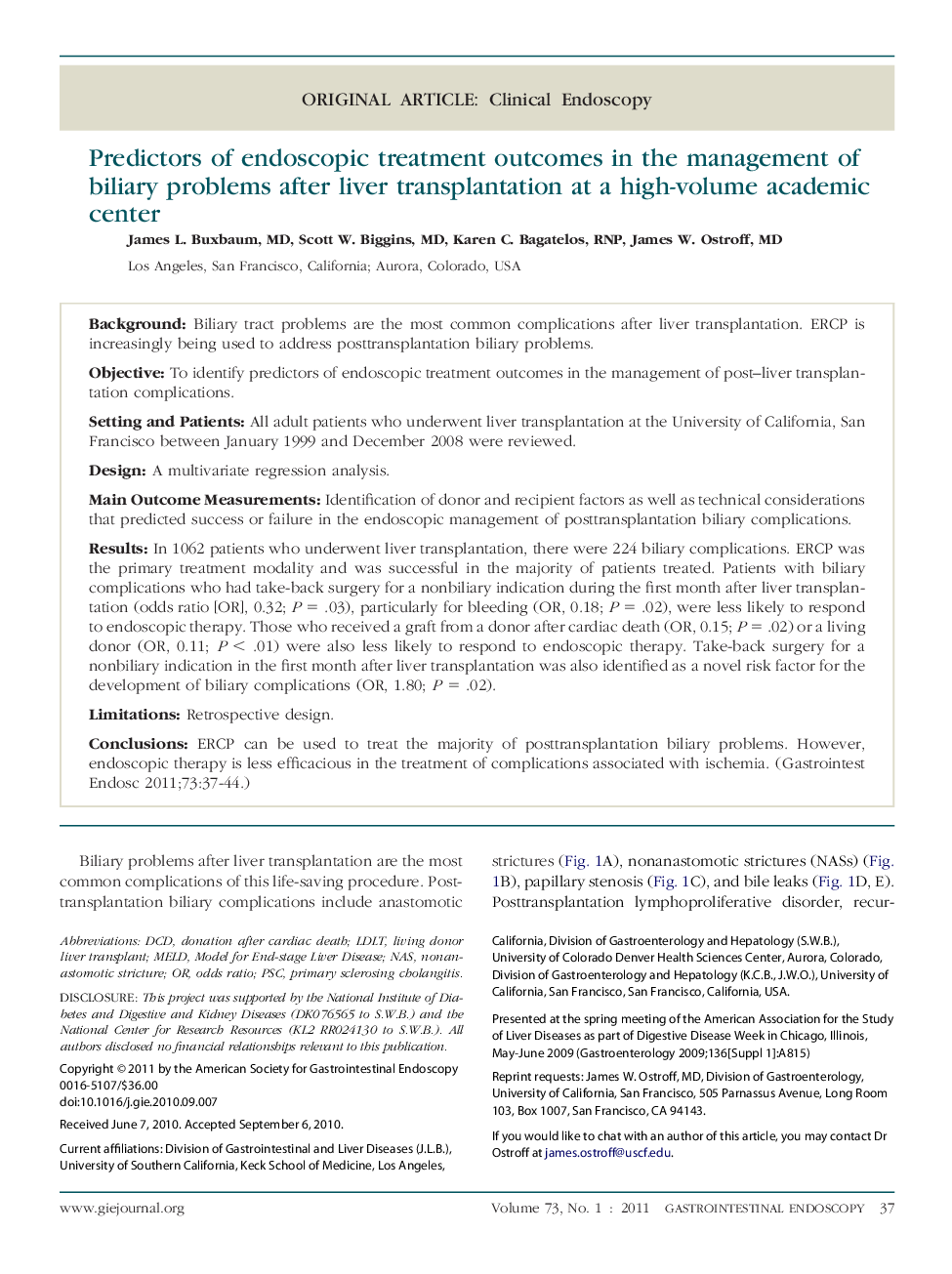| Article ID | Journal | Published Year | Pages | File Type |
|---|---|---|---|---|
| 3306647 | Gastrointestinal Endoscopy | 2011 | 8 Pages |
BackgroundBiliary tract problems are the most common complications after liver transplantation. ERCP is increasingly being used to address posttransplantation biliary problems.ObjectiveTo identify predictors of endoscopic treatment outcomes in the management of post–liver transplantation complications.Setting and PatientsAll adult patients who underwent liver transplantation at the University of California, San Francisco between January 1999 and December 2008 were reviewed.DesignA multivariate regression analysis.Main Outcome MeasurementsIdentification of donor and recipient factors as well as technical considerations that predicted success or failure in the endoscopic management of posttransplantation biliary complications.ResultsIn 1062 patients who underwent liver transplantation, there were 224 biliary complications. ERCP was the primary treatment modality and was successful in the majority of patients treated. Patients with biliary complications who had take-back surgery for a nonbiliary indication during the first month after liver transplantation (odds ratio [OR], 0.32; P = .03), particularly for bleeding (OR, 0.18; P = .02), were less likely to respond to endoscopic therapy. Those who received a graft from a donor after cardiac death (OR, 0.15; P = .02) or a living donor (OR, 0.11; P < .01) were also less likely to respond to endoscopic therapy. Take-back surgery for a nonbiliary indication in the first month after liver transplantation was also identified as a novel risk factor for the development of biliary complications (OR, 1.80; P = .02).LimitationsRetrospective design.ConclusionsERCP can be used to treat the majority of posttransplantation biliary problems. However, endoscopic therapy is less efficacious in the treatment of complications associated with ischemia.
